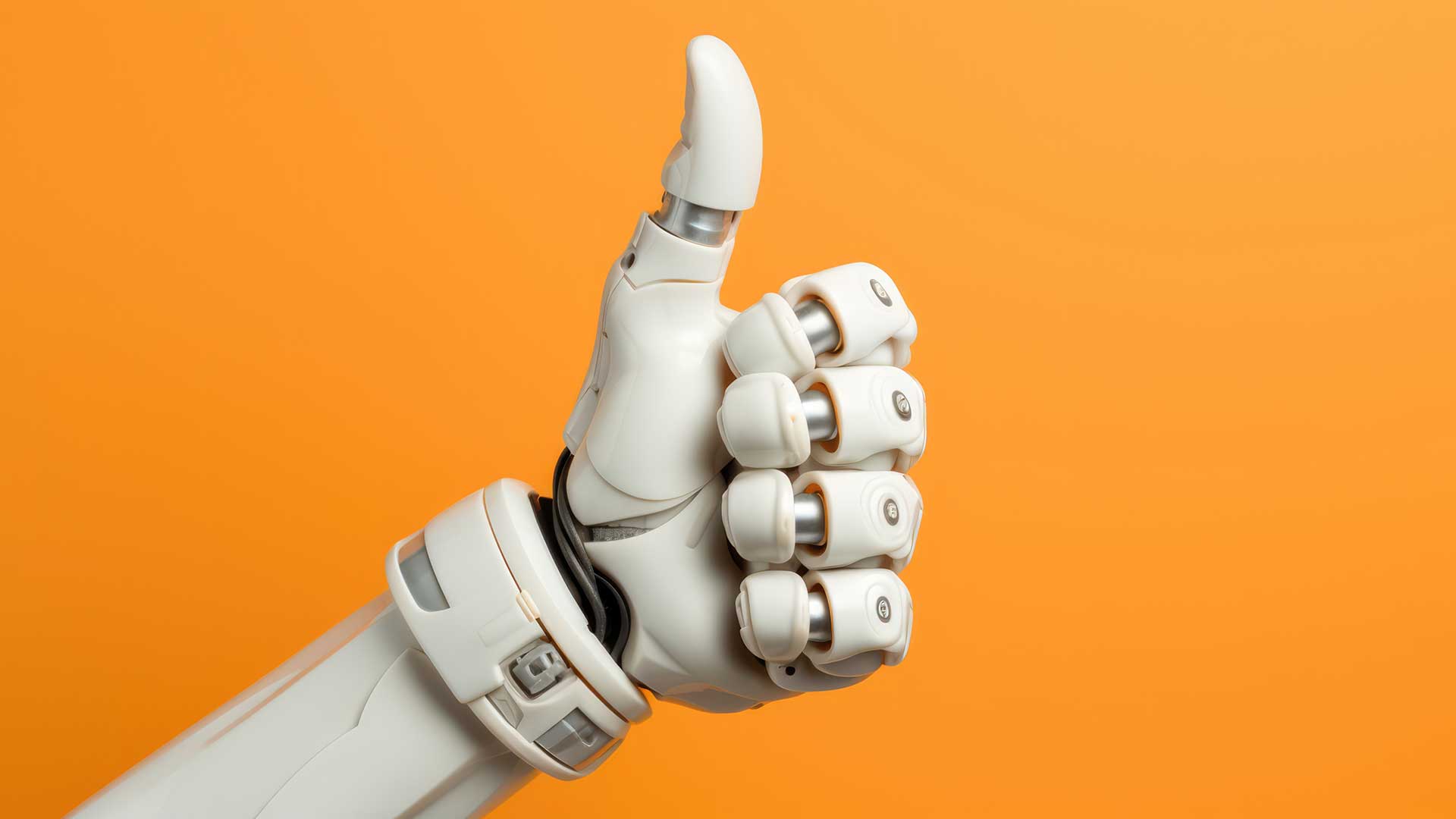Artificial intelligence (AI) is no longer a futuristic concept. The Flintstones have officially met the Jetsons. AI models have woven themselves into the fabric of our daily lives and our marketing practices. Which may have left you wondering, what does that mean for me, my job, or even my business? In short, AI is a tool. It’s not meant to be your replacement or your crutch. Here’s everything you need to know about how to use AI responsibly in marketing.
What is AI?
Just in case you’ve been hiding out in a cave and haven’t heard all the hype, Artificial Intelligence (AI) is technology that allows a computer or a machine to simulate human intelligence and problem solving.
Even though it feels new, AI has existed since the 1950s. Most of us have been using AI in our everyday lives for years, maybe without realizing it. (If you’ve ever said, “Hey Siri”, you’ve used AI). However, when tools like ChatGPT hit the mainstream market, AI models started to gain a whole lot of new attention.
From predictive analytics to automated customer service, AI is showing up in various corners of the marketing universe and its impact will only continue to grow. So, how can you, as a marketing professional, take advantage of this technology boom without getting left behind? It’s time to learn how to implement responsible AI use into your marketing work.
How Can AI Be Used in Marketing?
In the marketing realm, AI has a multitude of potential uses. Although many marketers fear it will make them obsolete, AI alone can only take you so far. It’s not a magic wand for all your marketing campaigns and content creation.
For now, it is best to use AI models to automate repetitive and mundane tasks with some human oversight. This allows marketing directors to take advantage of the benefits of generative AI while gaining more time to focus on strategic or creative work.
You could use AI to:
- Streamline email marketing campaigns by personalizing content and optimizing send times.
- Enhance customer service using chatbots that can handle basic inquiries, reserving human staff for more complex issues.
- Automate content curation for social media platforms.
- Implement predictive analytics to forecast marketing trends and consumer needs.
- Optimize website content for search engines (SEO) by using AI to analyze keywords and competition.
- Easily generate content ideas related to your company’s offerings.
- Monitor and analyze customer feedback without spending hours sifting through the data manually.
Notice I didn’t say, just sit back while it does all of your content writing, email marketing, and client communication.
Although AI is a great tool, it can’t replicate human work-ethic or connection. You can use AI to get your work done faster and more efficiently but you can’t let AI do it all alone. Responsible AI use is about doing your due diligence, to ensure quality and accuracy, while wielding this powerful tool.
Implementing Responsible AI Use in Your Company
Artificial Intelligence is here to stay. If your original plan was to ignore it all and wait for the AI boom to fade, it’s time to think up a plan B. Yes, the future of marketing will still include human marketers but it will also include AI use.
Instead of running from it, it’s time to embrace AI models and the time-saving advantages of them. It’s also time to create clear, ethical frameworks that ensure responsible use of AI within your company or organization.
Create Ethical AI Guidelines
This kind of AI technology is new for all of us. You can’t assume that anyone on your team already knows AI ethics. Instead, create clear guidelines that outline the ethical considerations of using AI and the responsible AI practices you expect everyone in the company to implement when using artificial intelligence in their work.
Your responsible AI guidelines should include:
How they can use AI:
-Do you want to communicate any restrictions or rules around how AI can be used in the workplace? For example, are you in favor of AI-generated content creation and marketing campaigns? Or just idea generation?
-What human oversight is required?
How you plan to mitigate risks:
-If you plan to use AI for data collection and analysis, what will you do to protect sensitive data? Is there certain data or information your team should not put into AI systems?
-Are there trusted AI tools you want your team to use?
How to Use AI Responsibly
As mentioned above, although AI can write you a decent looking blog post or email, those versions aren’t ready to be sent out into the world. Whenever you use AI for content creation, some human oversight is required.
Think of these five items as the pillars of responsible AI use in marketing. They need to be a part of your pre-publishing checklist to ensure that your AI-assisted content is still high-quality, factual information that provides value to your ideal client.
Pillar 1: Fact Check AI-Generated Content
AI systems can efficiently gather and churn out information at a breakneck pace. However, no matter how good the content sounds, you have to double check the details. Even if you give an AI program facts and figures to work with, the output is rarely 100% correct.
That is the biggest downside of the AI content creation frenzy. People are generating blog posts and articles with AI and publishing them without fact checking the material. The influx of false information makes it even harder to find reliable sources online.
To combat the influx of false information, verify all your facts with an actual expert, or with several online sources, to be sure your information is correct. Yes, it can be time-consuming and annoying to meticulously verify every detail in an AI-generated piece of content.
However, if you aren’t willing to do your due diligence, don’t use AI tools. The entire point of creating content is to build trust and support your client base. Publishing incorrect content will erode the trust you’ve worked to build. You owe it to your client base to create accurate, helpful content every time.
Pillar 2: Edit For Bias
AI is limited by the data it has been trained on. That means, the content AI generates is often skewed to favor, or focus on, one group of individuals over another. This isn’t just a technical glitch—it is an ethical issue that can perpetuate stereotypes and harm underrepresented groups.
AI bias often shows up in common phrases in our vocabulary that are discriminatory or ableist, cultural references, skewed statistics, and algorithms or images that perpetuate stereotypes.
The best way to mitigate bias in AI is, once again, to edit the material. Go through the text with a critical eye and take out anything that may be offensive to your audience or society as a whole. Technology is only as fair and just as the data it learns from and the people who guide it.
Pillar 3: Edit for Tone
Although you can guide AI tools to use a tone that closely matches your brand’s voice, it’s not going to get it perfect. Although AI systems might be able to mimic the style, they often lack the capacity to genuinely connect and portray human emotions. You, as the steward of your brand’s voice, have to infuse your content with authenticity. This human touch transforms one-dimensional messages into powerful narratives that capture attention and foster a sense of trust with your audience.
Pillar 4: Run AI-Generated Content Through A Plagiarism Checker
While AI products can tap into vast wells of collective knowledge, you don’t want to unknowingly copy someone else’s work in the process. Running any AI-generated content through plagiarism checkers before publishing it online is an essential part of responsible AI practices. This safeguards your reputation and respects the intellectual property of others.
Pillar 5: Prioritize People
Every piece of marketing content should pass the ultimate test, the human experience. If your content doesn’t resonate or add value to your target audience, it fails to serve its true purpose. Use of AI in marketing should be a bridge to connect deeper with your ideal customer. You don’t want it to become a barrier instead.
If your AI chatbots just annoy people, you’re creating a barrier, not a bridge. If your content has a lot of quickly-generated words without much value, that is also more of a barrier than a bridge.
Your #1 goal in anything you do is to reach your ideal client and serve your target audience. AI can make that process slightly easier and more efficient, but it can’t do it for you. AI is a complement, not a replacement.
Mastering Responsible AI Use in Marketing
Technology is at its best when it brings us closer to each other, not when it distances us from the very people our companies exist to help. Be the leader who champions AI with a conscience — grow with it, learn from its insights, and use it responsibly to cast a positive ripple across the digital waters of your industry.
If you don’t have the time to implement responsible AI use in your company, you probably need a marketing team more than a robot. Schedule a call with Guide MKTG. We will come alongside you as your marketing partner to determine the marketing steps your company can take to get the best results and we will even lend you our team of expert marketers to get it all done.




